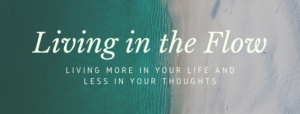
A nudge About Habitual Thinking
This is a lovely view not far from where my sister lives, I thought I’d share it today to give us a reminder of brighter weather to come! I hope you’re keeping warm wherever you are in the world.
Habitual thinking
Yesterday I finally decided to set up my new computer having been putting it off since before Christmas … technology is definitely my bugbear when it comes to overthinking things!? So, with the thought ‘physician heal thyself’ ringing in my ears, I made a start. And, as so often happens, once I got going it turned out to be far easier than I’d been imagining.
It made me think of how much time and energy can be wasted getting stuck in habitual patterns of thinking, in my case about technology … always automatically imagining the worse case scenario of losing files, or not being able to access my emails, or having to spend hours on the phone to helplines, none of which materialised. And that’s just technology, but if you apply this in other areas of life such as in your work or family or relationships or health it isn’t hard to see the impact this can have over time.
Turning thoughts into ‘givens’
In my work, it’s pretty easy to spot habitual thinking when people say things like ‘that’s just the way it is, or who I am, or such and such a person is, or it’s always been this way it’ll never change. I call this our ‘givens’, which so often go unquestioned, and can keep us stuck. It’s like we make up our minds about something or someone (or ourselves), or take something to heart, and then live as if those thoughts are a fixed truth. Thoughts about anything are only human, but when we turn a thought into a given it can quickly become like a self fulfilling prophesy. And that then creates a filter through which we live our lives, make choices, take decisions, see other people, shut down possibilities and new perspectives.
We can change our minds
Left unquestioned, habitual thinking can go on for years. It can become part of our very identity … who we think we are. You’ll probably know the expression ‘you get what you focus on’, and the more attention we give a particular thought about anything, the more ingrained it gets. But it can change in a heartbeat, we can change our minds, think again. I often ask people ‘what’s happening when you don’t think that thought?’ I’m constantly surprised by how revelatory that is, and the answer’s so often that they just feel better!
So what rings true for you … where can you see habitual thinking playing out in your life, and how might you begin to let that go, and leave space for some fresh thinking to come in.
Until the next time, have a lovely weekend.
All the very best for now
Tamsin

If you want to ‘live more in your life and less in your thoughts’ this year then I share more in my Living in the Flow mini series. Just click on the link and you’ll receive a short nudge over the next 7 days. See it as your quiet moment of reflection to start off your day, help keep you on track, and minimise any habitual thinking.





